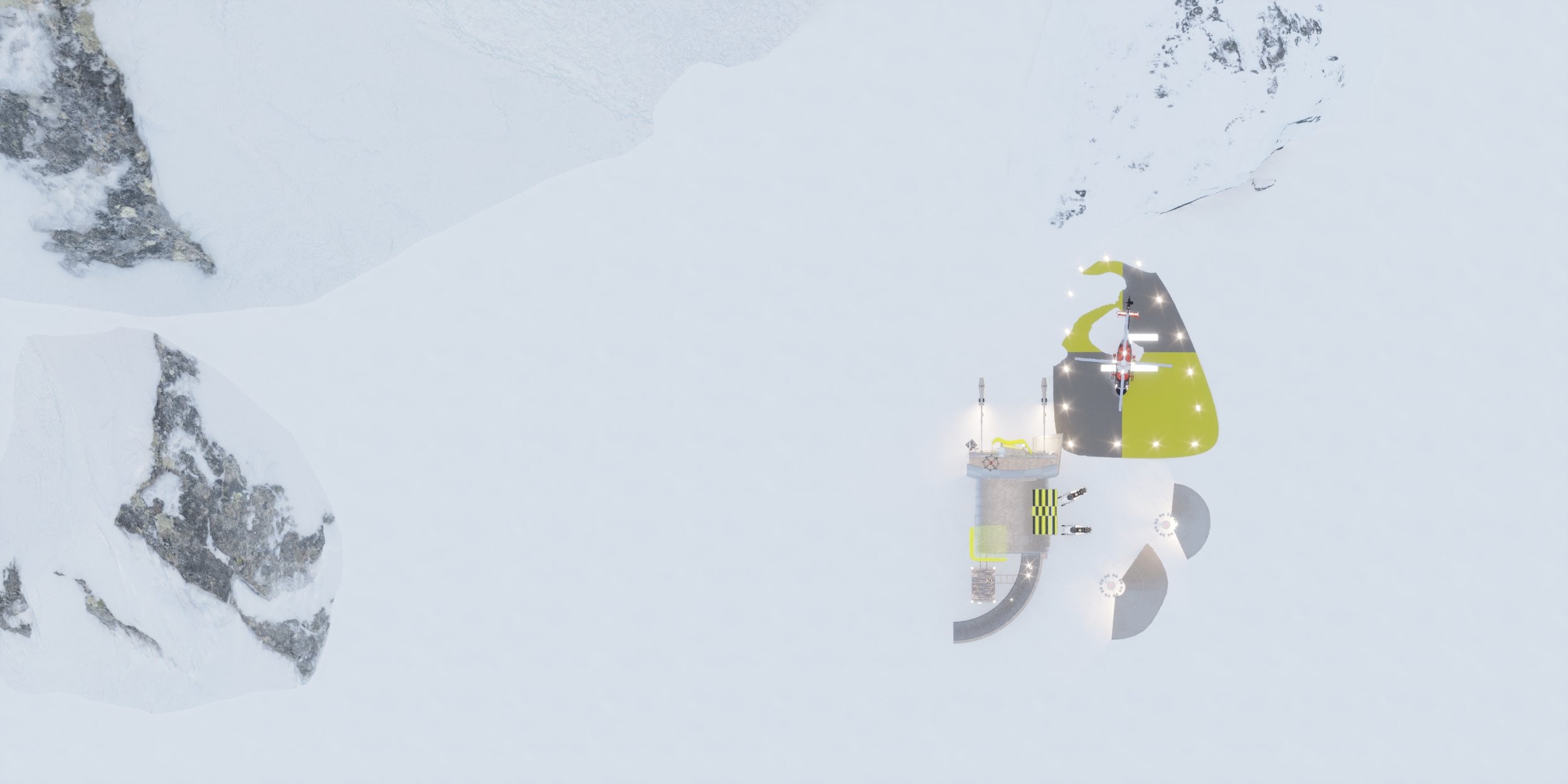

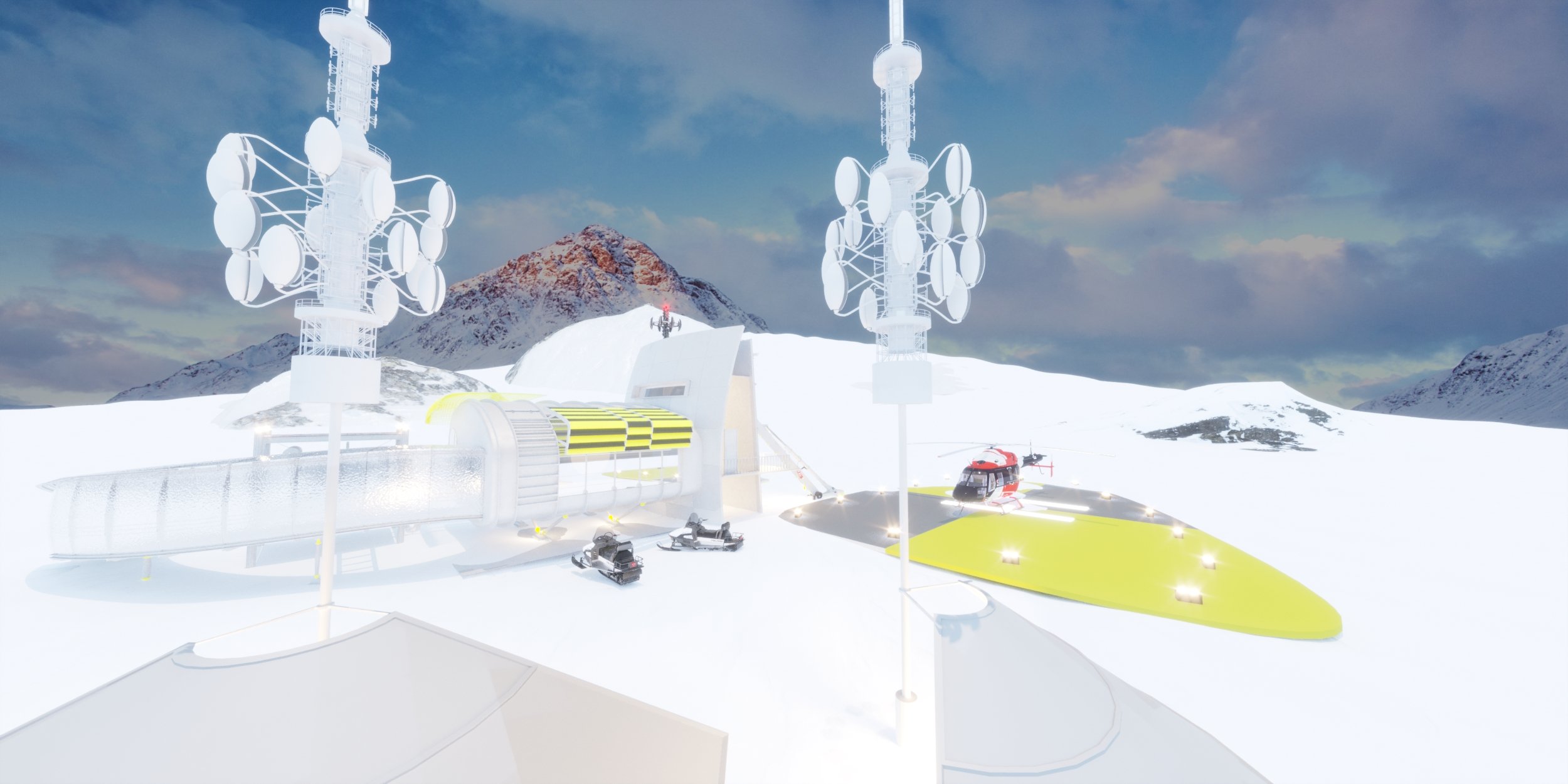

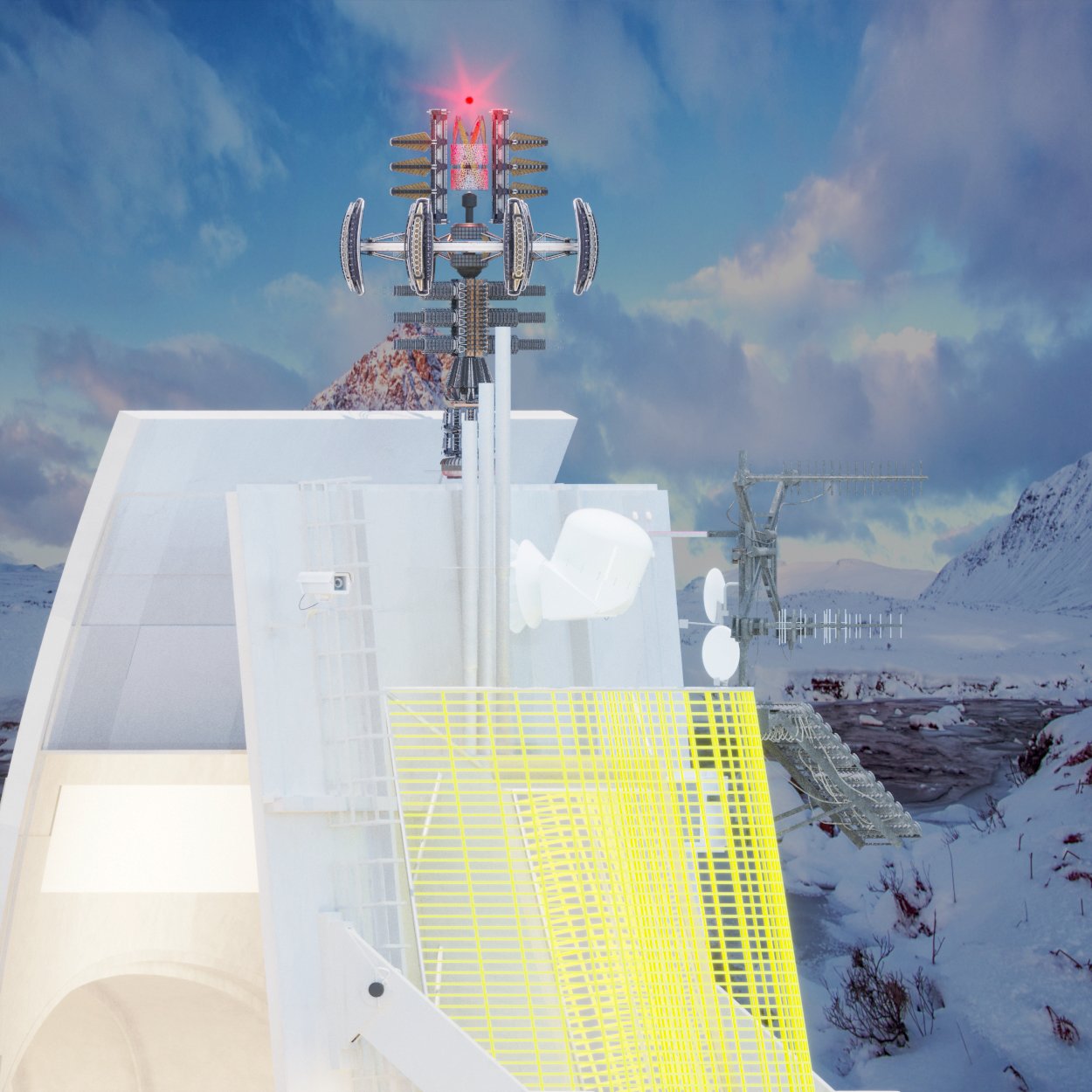


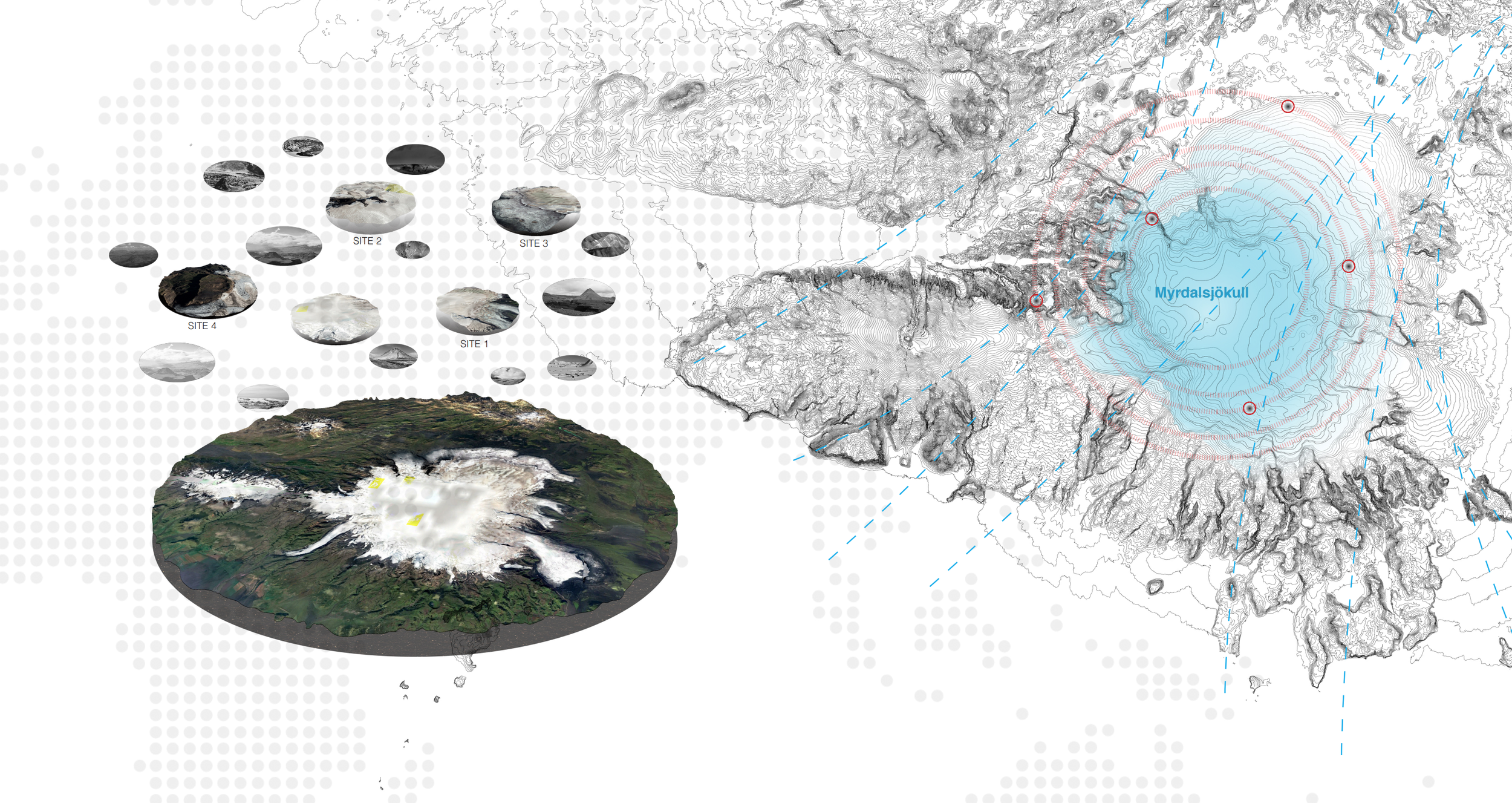
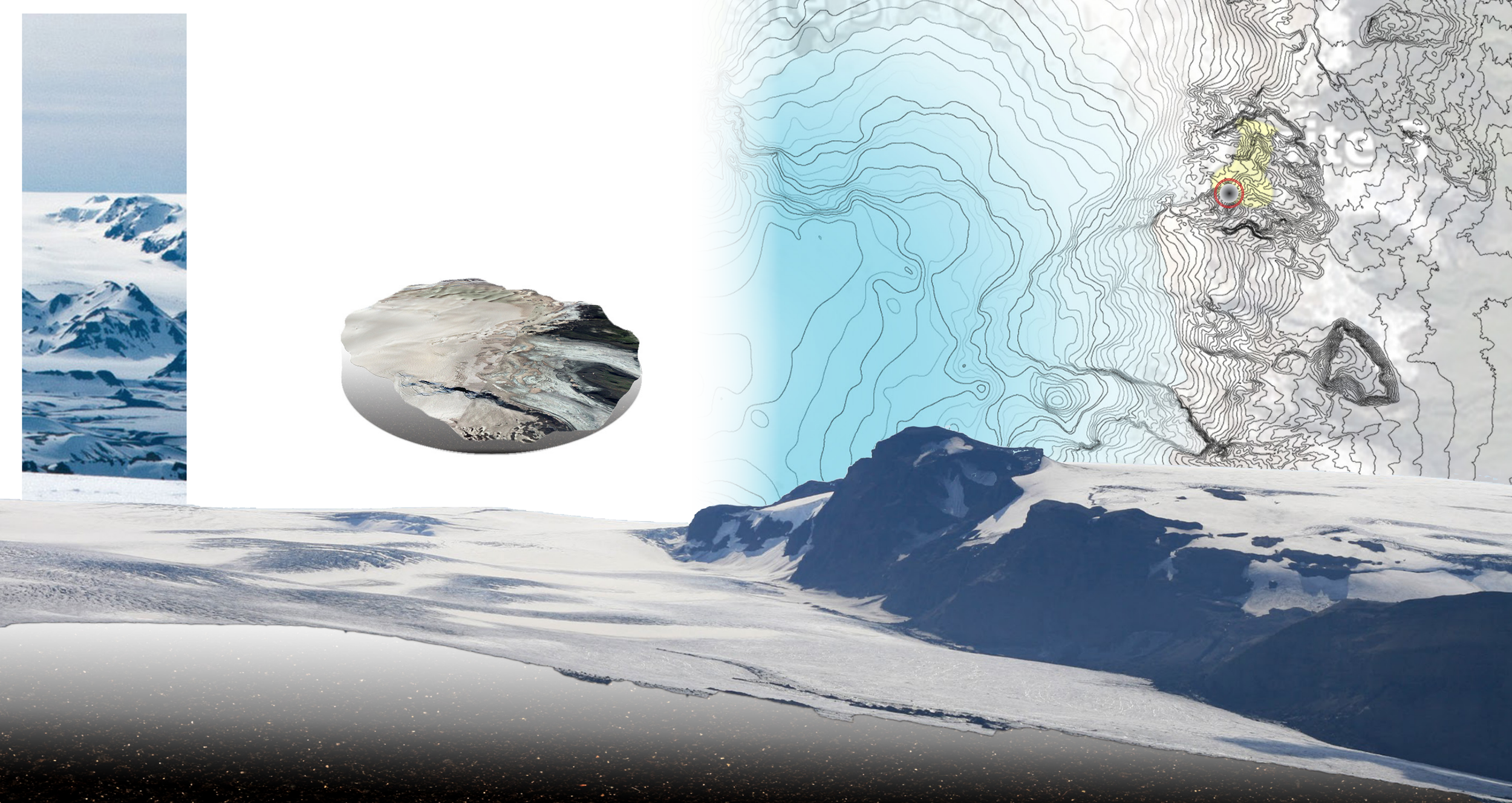

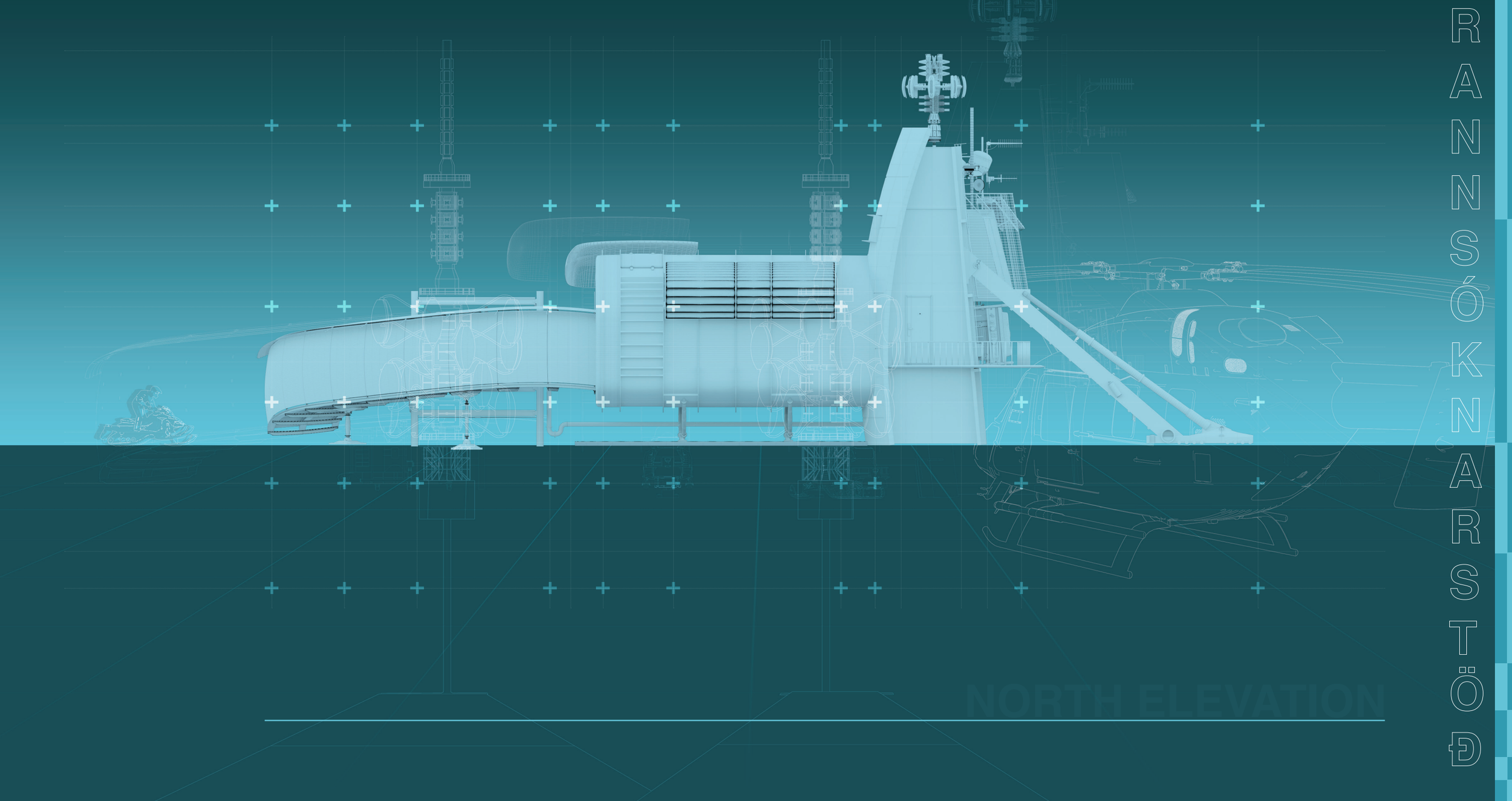
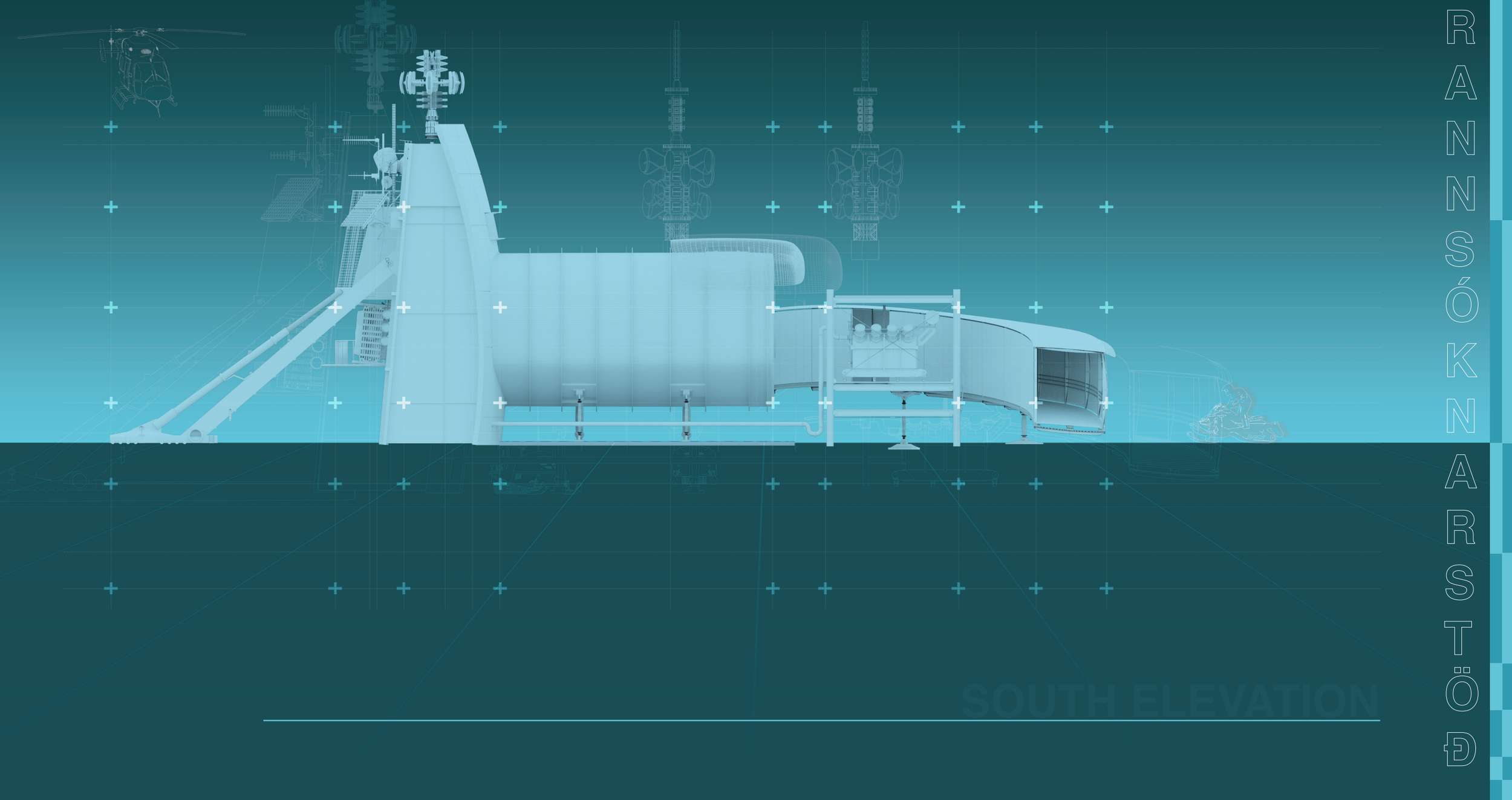











Myrdalsjokul Science Station
Location: Iceland
Type: industrial
Size: 2,129 Sq Ft
Year: 2021
Consultants/collaborations: ORCA, OS1
The ice cap reserves have lost 2/3 of their mass due to climate change, primarily in the last 150 years. The increase in greenhouse gas (GHG) particles in the atmosphere, from 200 to 421 in 150 years, has raised temperatures, causing underwater ice melt and surface calving. If GHG levels reach 600-800 ppm, all ice reserves could be lost, leading to an 80-meter sea level rise, global agricultural disruptions, and resource shortages. Ice melt has rapidly increased over the past decade, releasing methane from thawing permafrost. Icelandic glaciers are contributing to sea level rise at a rate of 2 cm per year. Iceland is working to reduce carbon consumption and has a reforestation program to sequester CO2, although success has been limited. A project proposal suggests installing autonomous observatories to monitor GHG levels around Myrdalsjokul glacier and a carbon sequestration center to nurture resilient trees for reforestation. Site selection considers remote and challenging conditions.

